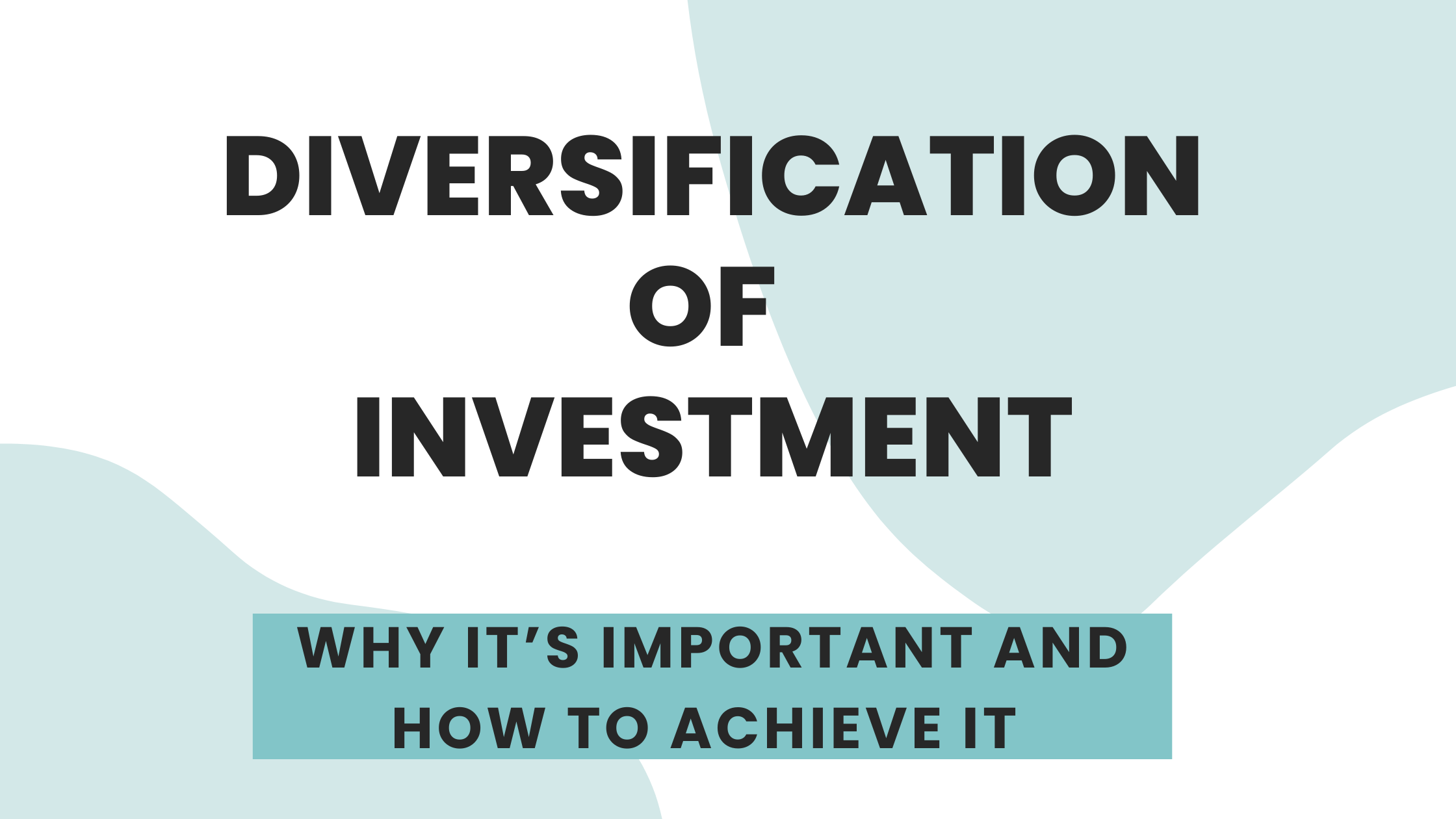
Diversification is a fundamental principle of investing that involves spreading your investments across various asset classes, sectors, and geographies to reduce risk and improve potential returns. By diversifying your portfolio, you minimize the impact of a poor-performing investment on your overall returns. This comprehensive guide will explain why diversification is essential and provide strategies to help you achieve a well-diversified portfolio.
Why Diversification is Important
- Reduces Risk: Diversification reduces the risk associated with investing in a single asset or asset class. If one investment performs poorly, others in your portfolio may perform well, balancing out the overall returns.
Example: If you invest all your money in a single company’s stock and that company faces financial troubles, you risk losing a significant portion of your investment. However, if you spread your investments across multiple companies in different industries, the impact of one company’s poor performance is lessened.
- Enhances Returns: A diversified portfolio can provide more stable returns over time. While diversification does not guarantee profits, it can smooth out the volatility of your portfolio, leading to more consistent performance.
Example: In a diversified portfolio, some investments might perform well when others do not, balancing the overall returns. For instance, during an economic downturn, bonds might perform better than stocks, providing stability to your portfolio.
- Protects Against Market Volatility: Different asset classes react differently to market events. By holding a variety of investments, you can protect your portfolio from the full impact of market volatility.
Example: During a stock market downturn, gold and other precious metals often perform well as investors seek safe-haven assets. Having a portion of your portfolio in commodities can protect against stock market volatility.
- Capital Preservation: Diversification helps in preserving capital by reducing the risk of significant losses. A diversified portfolio is less likely to experience dramatic losses compared to a concentrated one.
Example: A portfolio invested solely in high-growth tech stocks might see substantial losses if the tech sector crashes. In contrast, a diversified portfolio with investments in tech, healthcare, utilities, and bonds is more likely to preserve capital during sector-specific downturns.

How to Achieve Diversification
- Diversify Across Asset Classes: Invest in a mix of asset classes such as stocks, bonds, real estate, commodities, and cash. Each asset class has different risk and return characteristics, which helps balance the portfolio.
Example: Allocate 60% of your portfolio to stocks, 30% to bonds, 5% to real estate, and 5% to commodities. This mix provides growth potential from stocks, income and stability from bonds, and protection against inflation from real estate and commodities.
- Diversify Within Asset Classes: Within each asset class, diversify your holdings to spread risk further. For example, within your stock allocation, invest in different sectors and industries.
Example: Within your stock portfolio, invest in technology, healthcare, finance, consumer goods, and industrial sectors. This way, if one sector underperforms, others may compensate.
- Geographic Diversification: Invest in both domestic and international markets to spread geopolitical and economic risks. Different regions perform differently based on their economic cycles, political stability, and market conditions.
Example: Allocate 70% of your stock investments to domestic companies and 30% to international companies, including emerging markets. This provides exposure to growth opportunities outside your home country.
- Diversify by Market Capitalization: Invest in companies of different sizes (large-cap, mid-cap, small-cap) to balance growth potential and stability. Large-cap stocks typically offer stability, while small-cap stocks offer higher growth potential.
Example: Within your stock allocation, invest 50% in large-cap stocks, 30% in mid-cap stocks, and 20% in small-cap stocks. This ensures a mix of stability and growth potential.
- Use Mutual Funds and ETFs: Mutual funds and exchange-traded funds (ETFs) offer built-in diversification, as they hold a basket of securities. This allows you to diversify your portfolio without having to buy individual stocks or bonds.
Example: Invest in a diversified mutual fund or ETF that tracks a broad market index like the S&P 500. This gives you exposure to a wide range of companies across various sectors.
- Regular Rebalancing: Over time, some investments in your portfolio may grow faster than others, leading to an imbalanced asset allocation. Regularly rebalance your portfolio to maintain your desired level of diversification.
Example: If your target allocation is 60% stocks and 40% bonds, but stocks grow to 70% due to market performance, sell some stocks and buy bonds to restore the 60/40 balance.
- Invest in Different Investment Styles: Combine different investment styles, such as growth, value, and income investing, to diversify further. Each style performs differently under various market conditions.
Example: Allocate 50% of your stock investments to growth stocks, 30% to value stocks, and 20% to income-generating stocks. This mix provides a balance of growth, stability, and income.
Conclusion
Diversification is a crucial strategy for managing risk and enhancing returns in your investment portfolio. By spreading your investments across different asset classes, sectors, geographies, and investment styles, you can protect your portfolio from significant losses and achieve more stable, consistent returns over time. Remember that diversification is not a one-time task; it requires regular monitoring and rebalancing to maintain your desired asset allocation. By following these principles, you can build a resilient and diversified portfolio that aligns with your financial goals and risk tolerance. Happy investing!






